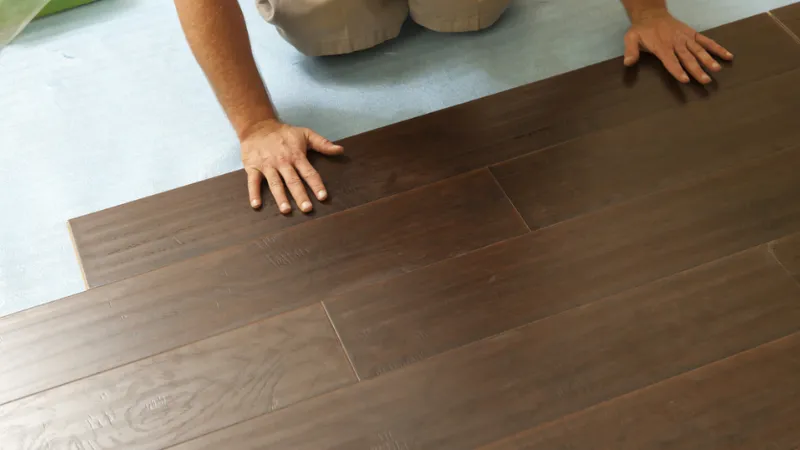A less expensive hardwood floor substitute that looks like hardwood is vinyl plank flooring. Since this flooring type is trendy nowadays, many people wonder about “how much does it cost to install vinyl plank flooring”. Below will give you the average vinyl plank floor installation cost by type, the main factors cost to consider when installing vinyl plank flooring, and how to save money on vinyl plank flooring installation?
So, how much does it cost to install vinyl plank flooring? Consider installing long-lasting vinyl plank flooring if your home needs new flooring. With a $2,286 national average, the price to install vinyl plank flooring can range from $928 to $3,659 in total.
Keep reading.
What is Vinyl Plank Flooring?
Before we answer “how much does it cost to install vinyl plank flooring”, let’s talk about what is vinyl plank flooring first. Vinyl plank is an excellent new vinyl flooring type you can find on the market nowadays. This high-tech, wooden-like composite material made of vinyl and limestone comes in planks and contains a few layers:
- Flexible or rigid core layer
- Embossed design layer
- Clear plastic wear layer
You can also find added layers like topcoats for extra protection, underlayment for sound absorption, or a waterproof layer. Because of its top qualities, this kind of flooring is a desirable choice for your house. Now, let’s answer “how much does it cost to install vinyl plank flooring”.
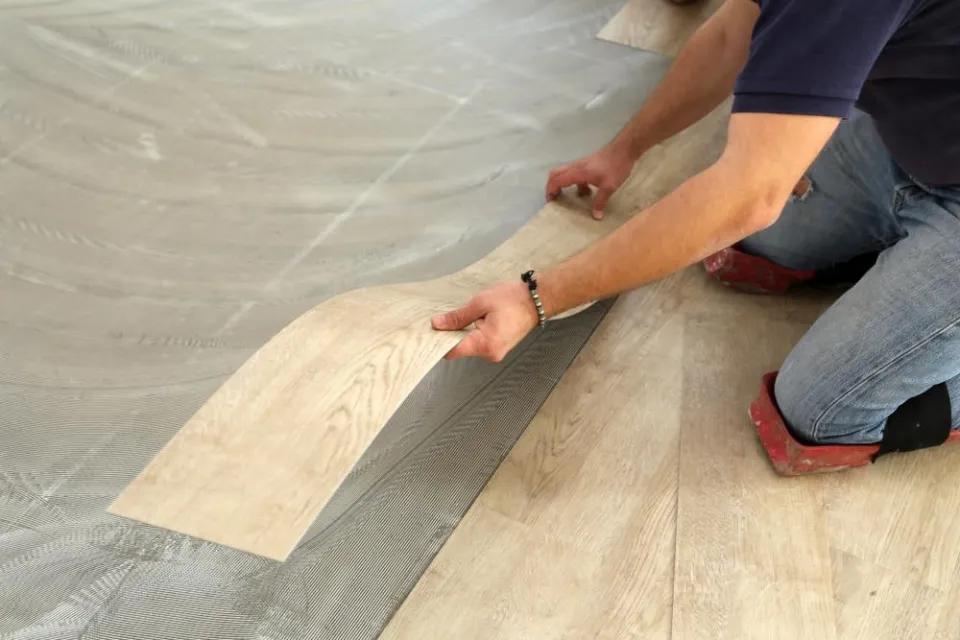
How Much Does It Cost to Install Vinyl Plank Flooring?
Now, let’s answer “how much does it cost to install vinyl plank flooring?”
- Typical Range:$952 to $3,755
- National Average:$2,349
Since vinyl planks snap together edge to edge, existing flooring can be covered with them without the need for glue or nails. Vinyl plank flooring is a popular choice for faux wood flooring. It is resistant to stains and scratches because urethane can be used to reinforce it. Vinyl plank flooring installation costs can range from $952 to $3,755, with the national average coming in at $2,349. Luxury vinyl plank flooring costs between $1 and $6 per square foot for materials and between $1 and $5 per square foot for labor, with vinyl plank flooring costing roughly $2 to $10 per square foot to install. Comparatively speaking, vinyl plank flooring costs significantly more per square foot than other vinyl sheet flooring, which can cost anywhere between $0.50 and $2. Vinyl flooring professionals typically charge around $36 per hour, or $1 to $5 per square foot for labor, not including the materials needed for the project. Because vinyl flooring is water-resistant, low maintenance, affordable, strong, long-lasting, and comfortable to walk on, many homeowners opt to install it. This includes vinyl planks, sheets, and tiles. To explain “how much does it cost to install vinyl plank flooring”, we will show you the details about the cost to install vinyl plank flooring.
Cost to Install Vinyl Plank Flooring Types
How much does it cost to install vinyl plank flooring? Below will give you the cost to install vinyl plank flooring types. Three different methods—each with advantages—can be used to install vinyl plank flooring.
Floating Floor
At the low end of the labor price range, this is the three options’ least expensive choice. Without the need for glue or nails, a floating floor simply clicks together from edge to edge. It’s possible to save more money by not removing the current floor.
Peel-and-Stick
Peel-and-stick vinyl planks have an adhesive on the back that will stick to the subfloor. While adhering the vinyl planks to the subfloor is easy, the prep is not. A versatile core product is peel-and-stick vinyl planks. If the subfloor isn’t perfectly level, flexible core flooring won’t adhere properly and will instead bend and warp. The cost of labor for installing peel-and-stick vinyl planks falls in the middle range.
Glue-Down
Gluing down individual vinyl planks is the most expensive installation option. Installing things with glue requires a lot of labor, so it costs money. Remember that the cost of gluing down vinyl plank flooring is comparable to the range of prices for engineered hardwood flooring. If you want low-VOC vinyl flooring, be aware that this installation method may not be environmentally friendly because the glue used to attach it is frequently high in VOCs.
Above answer “how much does it cost to install vinyl plank flooring” by types, next, we will show you DIY vs hiring a professional.
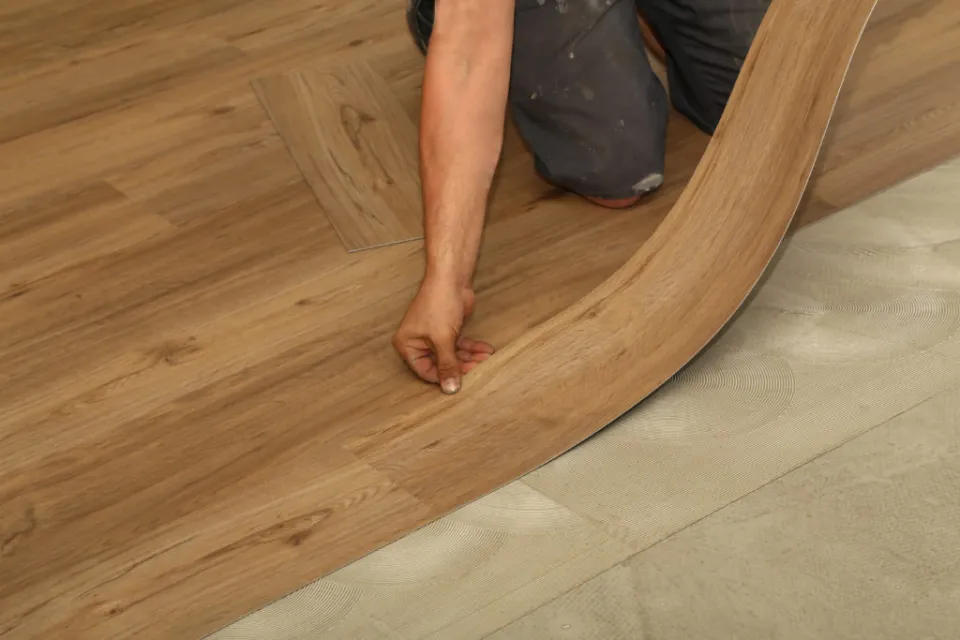
Cost to Install Vinyl Plank Flooring: DIY Vs. Hiring a Professional
How much does it cost to install vinyl plank flooring? One option is to install vinyl plank flooring on their own. The easiest type of flooring to install on your own is vinyl plank flooring. By installing the planks yourself, you can save money, but mistakes can be expensive. It also takes more than just the flooring planks for installation. Remember that the approximate cost of supplies and tools for a 500-square-foot DIY project is $3,300. A lot of reputable flooring contractors will guarantee their work, and professional installers can finish the job faster.
The Main Factors Cost to Consider When Installing Vinyl Plank Flooring
Now you understand “how much does it cost to install vinyl plank flooring”, let’s talk about the main factors cost to consider when installing vinyl plank flooring. Before you install vinyl flooring, there are some considerations you’ll need to make.
Vinyl Finishes
Vinyl no-wax, urethane, and enhanced urethane are just a few of the vinyl flooring options that are offered.
- Vinyl no wax finish:This vinyl floor is lightweight, making it ideal for rooms in your house with little foot traffic and little exposure to moisture and dirt.
- Urethane finish:Because it is stronger and heavier, it can withstand light foot traffic. Additionally scratch- and maintenance-friendly, this finish is also resistant to wear.
- Enhanced urethane finish:The most difficult choice is appropriate for areas with heavy traffic. It’s also scratch- and stain-resistant and will remain shiny and smooth with regular care and maintenance.
Installation Ease
If you’re not a pro, replacing your old flooring with new flooring can be difficult. Fortunately, since vinyl flooring doesn’t require glue or staples, installation is typically simpler than for other flooring types.
However, not all types of vinyl flooring have the same installation method. Check to see if the installation of your preferred option is possible over the concrete, plywood, hardwood, or other base material for your floor.
Durability
Your favorite vinyl flooring, how durable is it? Depending on how much foot traffic that area of your home sees, some types can last up to 20 years. A high-end brand also frequently includes a wear layer to shield the flooring from dents and spills. You might also receive a generous warranty from the company to cover any wear and tear.
Thickness
There are several different thicknesses of vinyl plank flooring. To make the floor more comfortable for walking on, some sheets have a padded layer. Some floors have plenty of elasticity when you walk on them, which means that they absorb sound.
Care
To keep your vinyl flooring looking new and feeling good underfoot, you’ll need to maintain it. If you’re looking for an option that doesn’t require much maintenance, consider a no-wax finish; this will keep it looking shiny and new the day of and after mopping.
Additionally, you might want to stay away from vinyl floors that are one solid color, especially if they are white or black, as these can show more dirt and pet hair than finishes with patterns.
Design
The appearance of your vinyl flooring matters because you’ll be looking at it every day. Take into account your home’s aesthetics so that your flooring will match. There’s an array of finishes available—from patterns to one-block colors. To replicate the appearance of concrete or hardwood, you may also want to think about printed vinyl.
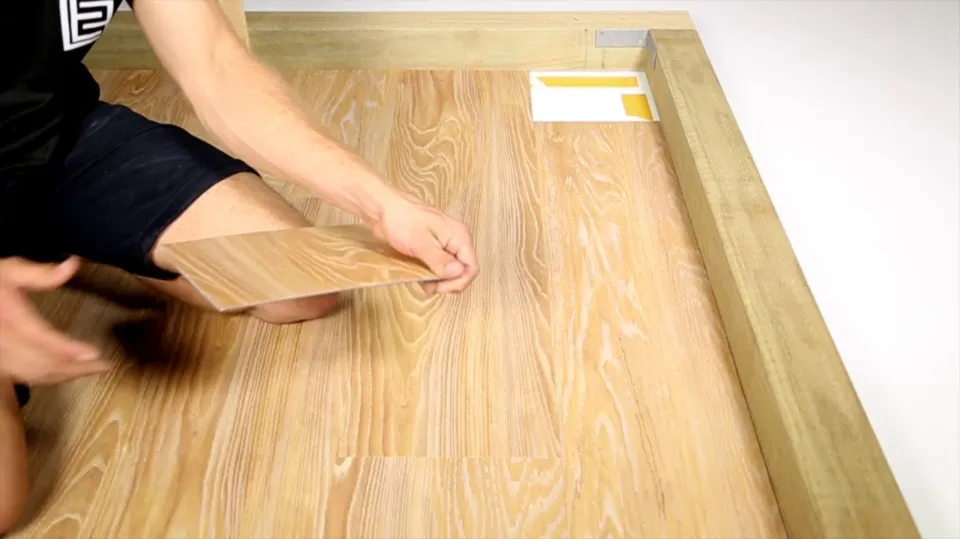
How to Save Money on Vinyl Plank Flooring Installation?
Speaking “how much does it cost to install vinyl plank flooring”, it is also important to save money on vinyl plank flooring installation. Vinyl plank flooring installation is not always inexpensive, and the project’s additional costs can add up quickly. The cheapest materials can help you save money on the cost of vinyl plank flooring, but there are other ways to cut costs without sacrificing quality.
- Get several price quotes. Get at least three quotes on flooring from reliable contractors in your area. The cheapest bid may save you money up front, but the contractor dedicated to quality workmanship will take the correct steps to ensure the job is done right.
- Choose the right material for you. Knowing what type of wear and tear your flooring will face will help save money in the long run. If you buy a cheaper material and it wears out fast, you’ll end up spending more money in the long run on replacement materials.
- Maximize your budget. Sticking to your budget and maximizing scheduling and timing will help avoid wasted hours. This is why hiring experienced flooring contractors is the best idea.
- Look for deals.Sales or discounts might be provided by some flooring suppliers. Get the best deal on flooring by doing your research.
See also: Best Vinyl Plank Flooring
How to Prepare for Vinyl Plank Flooring Installation?
After knowing “how much does it cost to install vinyl plank flooring”, let’s prepare for vinyl pllank flooring installation. Here’s how to put your flooring together before installing the new vinyl planks because preparation is the key to a successful installation.
Fix Moisture Issues
Due to the possibility of mold and mildew growth, pay close attention to any areas of your floor where moisture may have become trapped. You must install a moisture barrier before applying the vinyl because moisture problems with concrete flooring are frequent.
Using a moisture meter is another reliable method of determining whether your floor is damp. These tools monitor the moisture percentage, so you know whether you need a polyethylene sheet before installing the vinyl flooring.
Additionally, you can check for moisture by firmly sealing the edges of the vinyl flooring and taping it to the subfloor. Give the vinyl some time. If the duct tape comes off more easily after you take the flooring up, there may be moisture on the subfloor and you should check this out after you do.
Aside from a moisture barrier, you can also use a dehumidifier to remove any water vapor from inside your home and, thus, the floor.
Fix Holes and Cracks
Look for holes, cracks, and dents in the subfloor before installing vinyl sheet flooring. When you install the vinyl flooring, any rough or uneven surfaces will be felt under your feet. Replace any missing tiles and patch low spots to make the surface even to walk on.
Before you apply the vinyl sheets, give the glue enough time to dry. Even though some materials only need 20 minutes to dry, it’s best to let them sit overnight to make sure the surface is completely ready.
Clean the Floor
Before installing the vinyl plank flooring, vacuum the subfloor and clean it with soapy water. All stains don’t need to be completely removed because you’ll be adding another layer on top. On the vinyl flooring, however, even a tiny stone will leave a mark.
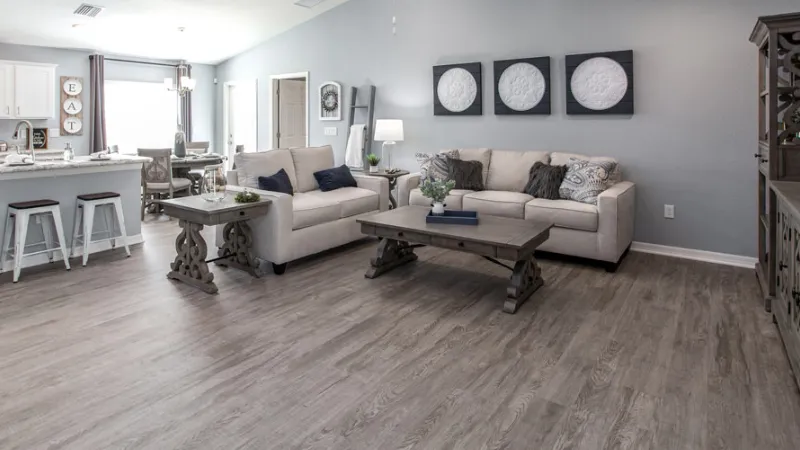
FAQs
How Long Does Vinyl Plant Flooring Installation Take?
In most cases, installation takes one to two days. However, before installation, some types of vinyl flooring, such as plank or tile, need additional days for the material to acclimate to the temperature and humidity levels in your home.
How Much Does It Cost to Install Vinyl Plant Flooring for An Entire House?
For typical vinyl flooring, the overall price ranges from $2 to $7 per square foot.
What’s the Difference Between Vinyl and Laminate Flooring?
Laminate flooring doesn’t contain wood, which vinyl does. Due to the humidity levels in a home, laminate is therefore more susceptible to moisture. Under a protective layer, fiberboard serves as the core of laminate flooring. A more durable, realistic finish is produced thanks to these many layers.
Pros of Vinyl Plank Flooring
It is simple to install and maintain and is strong enough to last for up to 20 years. Vinyl flooring comes in a variety of colors and patterns to match the decor of any home and is also water-resistant.
Cons of Vinyl Plank Flooring
Due to its lower strength compared to wood flooring, vinyl is more vulnerable to nicks and scratches from pointed objects. All the while, vinyl tiles are difficult to repair, so you’ll need to replace the entire flooring.
Summary: How Much Does It Cost to Install Vinyl Plank Flooring?
How much does it cost to install vinyl plank flooring? With a $2,286 national average, the price to install vinyl plank flooring can range from $928 to $3,659 in total.
The final vinyl plank flooring installation costs vary in a high range depending on numerous factors. Thankfully, no matter what your budget is, you can find the perfect option for your house.
If you have any questions, please leave a comment. My Prime Home tries to give you the best home improvement information. Don’t forget to share the post. Thank you for reading.
